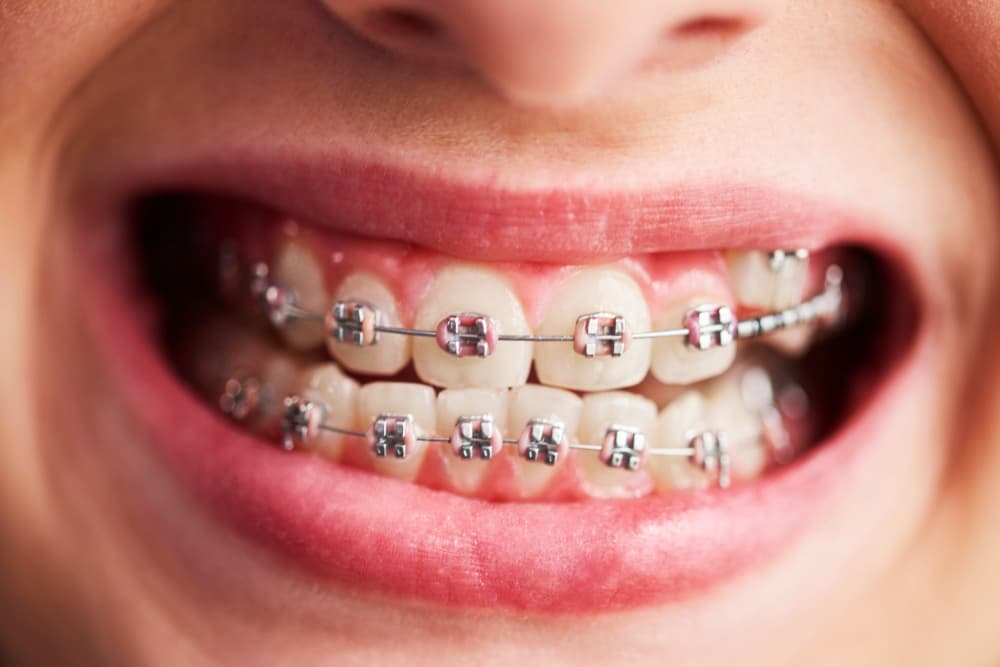Introduction
Overview of Teeth Gap Treatment
Teeth gaps, also known as diastemas, can vary in size and impact, from small spaces between a few teeth to larger gaps that may affect several teeth. While some people embrace these gaps as a unique feature, others seek treatment to close them for aesthetic or functional reasons. Addressing teeth gaps involves a range of treatment options, each offering different benefits and considerations. From traditional braces to innovative bonding techniques, the choice of treatment depends on individual needs and preferences.
Why Addressing Teeth Gaps is Important
Addressing teeth gaps is more than just a cosmetic concern; it can have significant effects on oral health and overall well-being. Large gaps can lead to issues such as misalignment, difficulty chewing, and speech impediments. Additionally, gaps can sometimes trap food and plaque, increasing the risk of dental problems like gum disease and cavities. By exploring effective teeth gap treatment options, individuals can enhance their smile, improve their dental function, and boost their confidence. Whether you’re looking for a subtle improvement or a dramatic change, understanding your treatment options is the first step towards achieving a healthier and more aesthetically pleasing smile.
Braces

Traditional Metal Braces: How They Work
Traditional metal braces are one of the most commonly used treatments for teeth gaps. These braces consist of metal brackets, wires, and elastic bands that work together to apply constant pressure to the teeth, gradually moving them into the desired position. The brackets are bonded directly to each tooth, and the archwire is threaded through these brackets to guide the teeth as they shift over time. To ensure that the teeth are moving correctly, regular adjustments by an orthodontist are necessary throughout the treatment.
Advantages of Traditional Metal Braces
The key advantage of traditional metal braces is their effectiveness. They can correct even the most severe gaps and misalignments, making them a versatile option for various orthodontic issues. Made from stainless steel, metal braces are incredibly durable and less likely to require repairs. Another benefit is their relatively lower cost compared to other orthodontic treatments like ceramic braces or Invisalign, making them accessible to a wider range of patients.
Disadvantages of Traditional Metal Braces
Despite their effectiveness, metal braces come with some drawbacks. They are quite noticeable, which can be a concern for those who prefer a more discreet treatment option. Metal braces can also cause discomfort, particularly after adjustments, and the brackets may irritate the inside of the mouth. Additionally, maintaining oral hygiene can be more challenging, as food particles and plaque can easily become trapped around the brackets and wires.
Ceramic Braces: A More Discreet Option
Ceramic braces offer a less visible alternative to traditional metal braces. They work in much the same way, using brackets and wires to guide the teeth into the correct positions. However, instead of metal brackets, ceramic braces use tooth-colored or clear ceramic brackets that blend in with the natural color of the teeth. This makes them a more discreet option for those seeking teeth gap treatment without the prominent appearance of metal braces.
Pros of Ceramic Brace
The main advantage of ceramic braces is their aesthetic appeal. The tooth-colored brackets make them far less noticeable than metal braces, which is especially appealing for adults and teenagers who are conscious of their appearance during treatment. Despite their subtle look, ceramic braces are just as effective as metal braces in closing gaps and correcting misalignments.
Cons of Ceramic Braces
However, ceramic braces also have their disadvantages. They are generally more expensive than metal braces due to the materials used. Additionally, the ceramic brackets are more fragile, making them more susceptible to breakage. While the ceramic material itself is resistant to staining, the elastic ties that hold the wire can become discolored over time if not properly cared for, potentially affecting the overall discreetness of the treatment.
Invisalign and Clear Aligners
What Are Invisalign and Clear Aligners?
Invisalign and clear aligners are modern orthodontic treatments designed to correct teeth alignment issues, including teeth gaps. Unlike traditional braces that use metal brackets and wires, Invisalign and clear aligners are made from smooth, transparent plastic, making them nearly invisible when worn. They are custom-made to fit snugly over your teeth, gently applying pressure to shift them into the desired position over time. Patients receive a series of aligners that are switched out every few weeks, gradually moving the teeth closer together and closing gaps.
Benefits Over Traditional Braces
Invisalign and clear aligners offer several advantages over traditional braces, making them a popular choice for teeth gap treatment. First, they are nearly invisible, so they allow for a more discreet treatment option compared to the noticeable metal brackets of traditional braces. This makes them particularly appealing to adults and teens who are conscious about their appearance. Additionally, they are removable, so you can take them out while eating, drinking, or brushing your teeth, allowing for easier maintenance of oral hygiene. Clear aligners also tend to be more comfortable, as they lack the metal components that can sometimes irritate the inside of the mouth.
Effectiveness in Treating Teeth Gaps
Invisalign and clear aligners can be highly effective for treating mild to moderate gaps between teeth. The aligners are specifically designed to target the areas that need correction, making them an efficient solution for closing gaps. While the treatment time can vary depending on the severity of the gaps and the individual’s specific dental condition, many patients start to see noticeable improvements within a few months. However, for more complex cases involving significant gaps or severe misalignment, traditional braces may be recommended as a more suitable treatment option.
Dental Bonding
What is Dental Bonding?
Dental bonding is a popular teeth gap treatment that involves applying a tooth-colored resin to the teeth to close gaps and improve their appearance. This cosmetic procedure is minimally invasive and cost-effective, making it an ideal choice for individuals looking for a quick fix to their teeth gaps without the need for braces or more extensive treatments.
The dental bonding process is relatively straightforward and can typically be completed in a single visit to the dentist. It begins with the dentist selecting a resin color that closely matches the natural shade of your teeth to ensure a seamless appearance. The surface of the teeth is then gently roughened, and a conditioning liquid is applied to help the bonding material adhere securely. The resin is carefully applied and sculpted to fill in the gaps and enhance the overall tooth structure. A special light is used to harden the resin, bonding it firmly to the teeth. Finally, the bonded area is polished to match the sheen of the rest of the teeth, resulting in a natural and attractive finish.
Advantages of Bonding for Teeth Gaps
Dental bonding offers several advantages as a teeth gap treatment. The procedure is typically painless and can be completed in just one visit, making it a convenient option for those seeking immediate results. Compared to other treatments like veneers or braces, dental bonding is more affordable while still delivering effective results. Unlike veneers, dental bonding usually requires little to no enamel removal, preserving the natural structure of your teeth. Additionally, the tooth-colored resin blends seamlessly with the surrounding teeth, providing a natural-looking solution to gaps. Besides closing gaps, dental bonding can also be used to fix chipped or misshapen teeth, enhancing the overall smile.
Porcelain Veneers
How Veneers Work
Porcelain veneers are thin, custom-made shells designed to cover the front surface of your teeth. They are crafted from high-quality porcelain that mimics the natural look of tooth enamel. To apply veneers, a small amount of enamel is removed from the tooth’s surface to make room for the veneer. This ensures a proper fit and helps the veneer adhere securely. Once the veneers are ready, they are bonded to the teeth using a strong dental adhesive. The result is a seamless and natural-looking enhancement that effectively addresses aesthetic issues, including teeth gaps.
Benefits for Covering Gaps
Porcelain veneers offer several advantages for closing teeth gaps. Firstly, they provide an immediate and dramatic improvement in your smile’s appearance. Veneers can be designed to cover gaps and create a more uniform look, without the need for extensive orthodontic treatment. They are also highly customizable, allowing your dentist to tailor the size, shape, and color of the veneers to match your natural teeth, creating a cohesive and attractive smile. Additionally, veneers are stain-resistant, which helps maintain a bright and clean appearance over time.
Longevity and Maintenance
One of the notable benefits of porcelain veneers is their durability. With proper care, they can last between 10 to 15 years, making them a long-lasting option for teeth gap treatment. Maintaining veneers involves regular oral hygiene practices, such as brushing and flossing, along with routine dental check-ups. It’s also advisable to avoid habits that can damage the veneers, such as grinding your teeth or biting down on hard objects. By following these maintenance guidelines, you can ensure that your veneers continue to enhance your smile for many years.
Teeth Contouring and Reshaping
Explanation of the Procedure
Teeth contouring and reshaping, also known as dental contouring or odontoplasty, is a cosmetic dental procedure aimed at improving the appearance of teeth by altering their shape. During this procedure, a dentist uses specialized tools to gently file down or smooth the enamel, the hard outer layer of the tooth. This process is commonly used to correct minor imperfections, such as uneven teeth, small chips, or slight gaps. Often, teeth contouring is combined with dental bonding to achieve a more refined and polished look, especially for those seeking subtle enhancements without the need for more invasive treatments.
Suitable Candidates for Teeth Contouring
Teeth contouring and reshaping is particularly suitable for individuals who have minor cosmetic issues and are looking for a subtle improvement in their smile. This treatment is ideal for those with small gaps between teeth that do not require extensive orthodontic treatment, as well as those who have minor imperfections like uneven edges or slight overlaps. It is also beneficial for people who want their teeth to appear more symmetrical or balanced without undergoing braces or veneers. However, this procedure is not suitable for everyone. Those with significant tooth misalignment, major gaps, or extensive dental problems may require more comprehensive treatments, such as braces or veneers. Consulting with a dental professional is essential to determine if teeth contouring aligns with your specific needs and dental health.
Pros and Cons
Teeth contouring and reshaping offers several advantages. It is a minimally invasive procedure compared to options like braces or veneers, and it provides quick results, often completed in just one dental visit. Additionally, it is generally more affordable than other cosmetic treatments. The procedure is highly customizable, allowing the dentist to make precise adjustments based on the patient’s preferences.
On the downside, teeth contouring is suitable only for minor adjustments and cannot address more significant orthodontic issues or large gaps. The changes made are permanent, as the removal of enamel cannot be reversed. Some individuals might experience temporary tooth sensitivity following the procedure, although this is usually mild and short-lived. Moreover, for more extensive cosmetic improvements or structural changes, other treatments may be necessary.
Comparing Treatment Options

When considering teeth gap treatment, it’s essential to weigh the cost, duration, and aesthetic outcomes of each option to find the best fit for your needs. Here’s a comparison of the top treatments available:
Cost Comparison
The cost of teeth gap treatments can vary significantly based on the method chosen. Traditional metal braces are typically the most affordable option, ranging from $3,000 to $7,000. Ceramic braces, which are less noticeable but more expensive, usually cost between $4,000 and $8,000. Invisalign and other clear aligners tend to be on the higher end, with prices ranging from $4,000 to $7,000, depending on the complexity of the case.
Dental bonding is a more budget-friendly treatment, often costing between $300 and $600 per tooth. Porcelain veneers, while offering a more durable and aesthetically pleasing result, are the most expensive, typically ranging from $800 to $2,500 per veneer. Teeth contouring and reshaping is generally less costly, but it’s important to consider that it may only be suitable for minor adjustments.
Duration of Treatment
Treatment duration varies with each method. Traditional metal braces usually require 18 to 24 months to effectively close gaps and align teeth. Ceramic braces follow a similar timeline, though the duration might be slightly longer due to their less sturdy nature compared to metal braces.
Invisalign and clear aligners offer a shorter treatment time for many patients, often between 6 to 18 months. This can be particularly advantageous for those with less severe gaps. Dental bonding provides a quicker fix, with results typically visible immediately after the procedure. However, bonding may need to be redone periodically.
Porcelain veneers offer a permanent solution that doesn’t require continuous adjustments or lengthy treatment periods, but the process of getting veneers, including fittings and adjustments, may take several weeks. Teeth contouring and reshaping are usually completed in a single visit but are suitable only for minor cosmetic changes.
Aesthetic Outcomes
When it comes to aesthetics, each treatment option has its strengths. Traditional and ceramic braces are effective but are often visible, which can be a concern for those seeking a more discreet appearance. Invisalign and clear aligners are nearly invisible, making them a popular choice for those who prioritize discretion.
Dental bonding can be color-matched to your natural teeth, providing a seamless look for gaps, though it may not be as durable as other options. Porcelain veneers offer excellent aesthetic results, creating a uniform and natural appearance. They are highly customizable and can effectively mask gaps with a flawless finish.
Teeth contouring and reshaping can also enhance your smile by subtly adjusting tooth shape and size, though it’s best suited for minor gaps and adjustments. The results can be very natural-looking, especially when combined with other treatments.
Conclusion

Summary of the Top Treatment Options
In the realm of teeth gap treatment, each option offers unique advantages to address your specific needs. Braces, both traditional metal and ceramic, remain a reliable choice for gradually closing gaps and aligning your teeth. Invisalign and clear aligners provide a more discreet and comfortable solution, ideal for those who prefer minimal visibility during treatment. Dental bonding is a quick, less invasive method suitable for minor gaps, while porcelain veneers offer a durable and aesthetically pleasing fix, enhancing both function and appearance. Teeth contouring and reshaping offer additional flexibility for minor adjustments.
Choosing the Right Option for You
Selecting the right teeth gap treatment involves evaluating several factors: the size and location of the gap, your dental health, aesthetic preferences, and budget. Consulting with your dentist is crucial to determine which option aligns best with your goals. They will help assess your condition, explore the benefits and drawbacks of each treatment, and guide you in making an informed decision.
Next Steps for Teeth Gap Treatment
After choosing the most suitable treatment, the next steps include scheduling an initial consultation, developing a customized treatment plan, and setting a timeline for your procedure. With proper planning and guidance, you can achieve a beautifully aligned smile and enjoy enhanced confidence. Addressing your teeth gaps not only improves your smile but also contributes to better overall dental health, making the choice of treatment a significant and rewarding investment.






